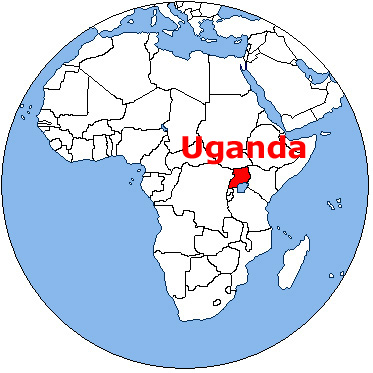Uganda is a republic divided politically into 77 districts and 4 geographical regions.
The country became independent from England on 9 October 1962. The current head of state is President Yoweri Kaguta Museveni. According to the United Nations Development Programme, 37.7% of Uganda’s population lives below the poverty line (2017).

Kampala
Kampala is the capital and the industrial and administrative centre of the country. The city is spread over 7 hills and means: “The hills of the antelopes”.
Entebbe
Entebbe is a suburb about 40 kilometres from Kampala and is situated on Lake Victoria. The international airport is located here.
Wildlife parks of Uganda

Murchison Falls National Park
This 3860 km² park is also called Kabalega Falls National Park. It is about 6 hours drive from Kampala. In this park are the Murchison Falls. The white Nile flows through the park from east to west and has wild waterfalls and rapids. In the park there are Rothschild- giraffes, hippos and various species of birds.
Kibale Forest National Park
Situated 35 kilometres south of Fort Portal, this 766 km² wildlife park consists of a savannah landscape with marshes, crater lakes and tropical forests. The wildlife park is home to chimpanzees, elephants, buffaloes, mute pigs and antelopes.
Ruwenzori Mountains National Park
The snow-capped peaks of the Ruwenzori (“Mountains of the Moon”) in the west of the country supply 3% of the population with their meltwater. The park covers approximately 1000 km².
Queen Elizabeth National Park
This park is the most wildlife rich in Uganda. There are herds of elephants, buffaloes, giraffes, baboons, zebras and antelopes. The park covers almost 2000 km² and has a savannah landscape with alternating swamps, rivers, lakes and tropical rainforest.


General information
Official language: English
Other languages: Swahili, Luganda
The capital: Kampala
Form of government: Republic
Religion: Christian, Islamic a.o.
Surface area: 241,038 km2
Population: 42.72 million (2018)
Other
Currency: Ugandan shilling (UGD)
Time zone: UTC +3
National Day: 9 October (Independence Day)
National anthem: Oh Uganda, Land of Beauty
